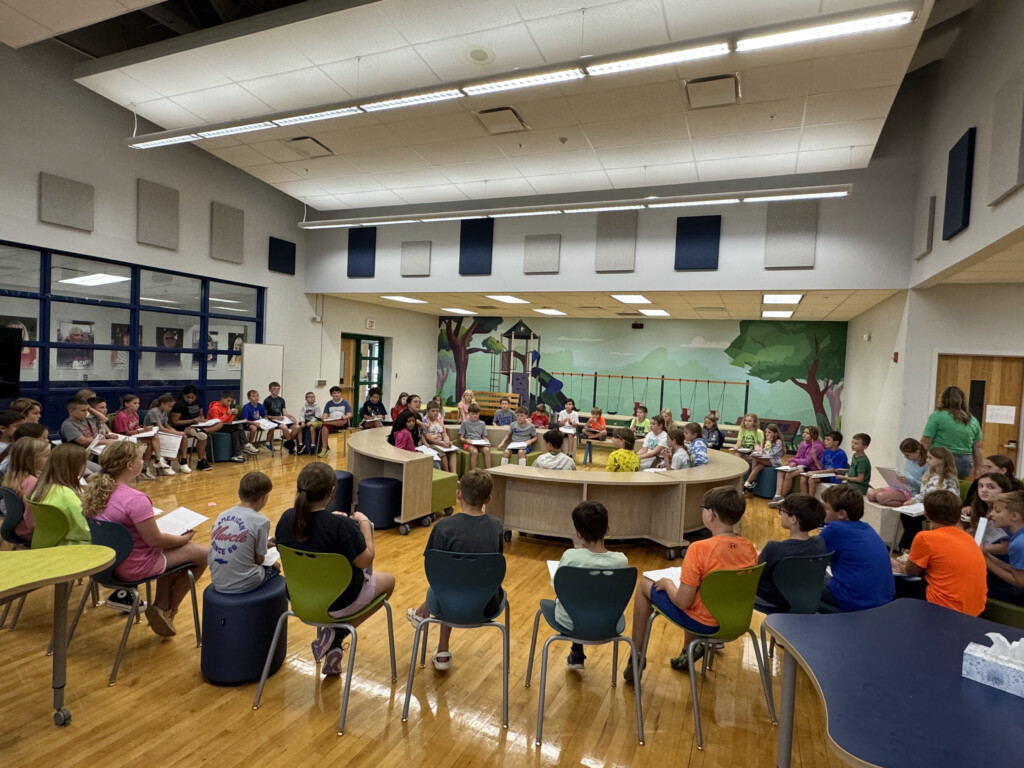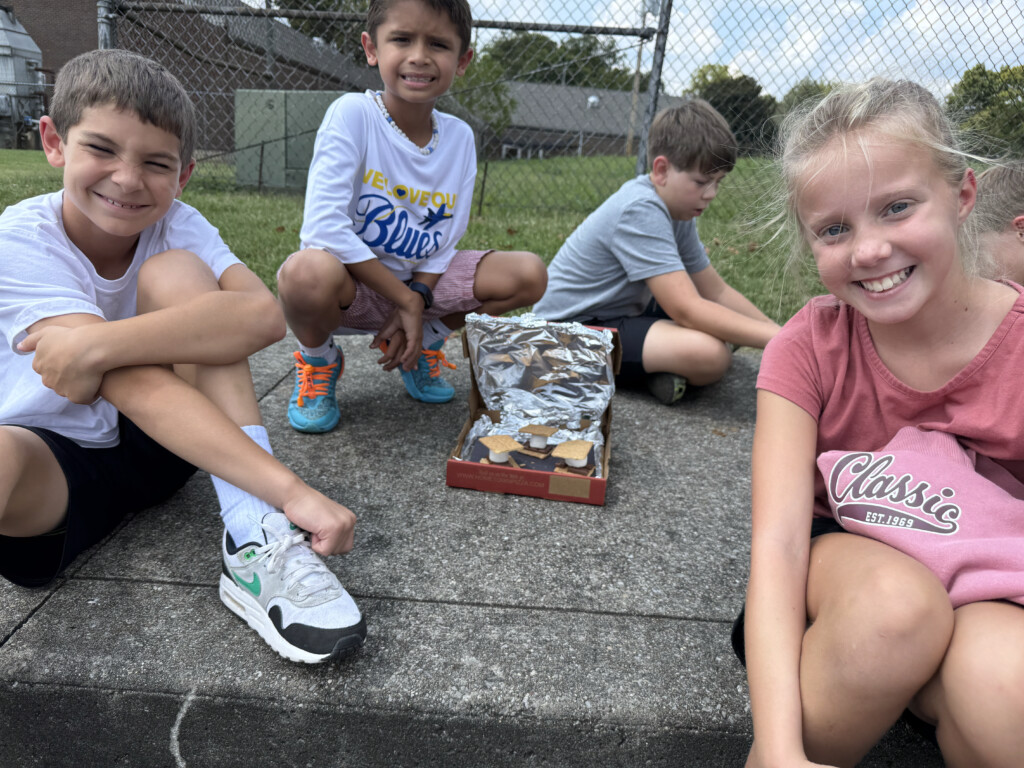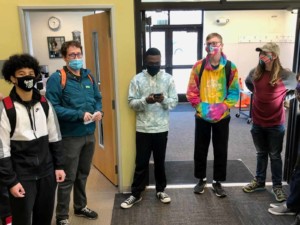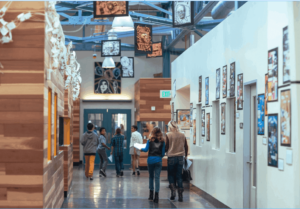Reimagining School Starts with Reclaiming Time
Key Points
-
Schools are successfully reimagining time as a design element to enhance personalized and interdisciplinary learning.
-
Prototypes and low-risk innovation strategies can effectively lead to meaningful educational transformations.

By: Rachel Albright, Lacey Eckels, and Carmen Coleman
Never mistake activity for achievement.
John Wooden
Across the country, educators are working harder than ever—yet the results don’t always match the effort. We’ve defined what we want for our students through graduate and learner profiles. We can describe the kinds of learning experiences that will help students build those skills. But a fundamental question remains: Are we spending our time on the work that will accomplish those goals?
In education, it’s easy to confuse busyness with progress. Between endless meetings, constant emails, and the urgency of daily disruptions, it can feel like an achievement just to make it through the day. But if we were to pause and look honestly, would we be able to explain how today’s work moved us closer to a future where all students thrive?
Systems Get the Results They’re Designed For
W. Edwards Deming said it best: “Every system is perfectly designed to get the results it gets.” If we’re grappling with teacher burnout, student disengagement, and inequities in outcomes, we have to ask—how might our own systems and routines be unintentionally contributing to these very problems? In high schools, especially, the way time is structured—through rigid schedules, siloed subjects, and credit-driven pacing—can reinforce the very outcomes we’re trying to change, making it hard to design the meaningful, connected learning experiences our graduate profiles call for.
Most sectors that have undergone transformation in recent decades—healthcare, technology, and transportation—have done so through intentional investment in research and development (R&D). They test, fail, revise, and iterate. Education, by contrast, rarely offers time or space to try new ideas, much less to refine them over time.
What would it look like to treat innovation not as an add-on but as a core function of schooling?
Time as a Variable for Learning
A growing number of schools and districts are asking this same question and taking bold steps toward realignment. They’re not just creating new schedules or electives; they’re creating new ways of thinking about time, learning, and teacher collaboration.
Collaborative Teaching and Planning. In one southwestern 3000+ student high school, leaders redesigned the daily schedule to prioritize both collaborative and individual teacher planning. Leaders recognized that a reimagined student experience—one built on interdisciplinary, personalized learning—requires time, and they made space for it during the school day.
In this model, teams of teachers share groups of students for a prolonged period. On paper, a student’s schedule might show three separate, back-to-back, isolated courses (i.e., Algebra 1, ELA, and World History). However, those teachers can use that time block in the way most useful for the tasks at hand, whether combining for an interdisciplinary unit or dividing for short skill/content-specific lessons or organizing the time and space in another way that students need. As a professional team, they have full autonomy over their 3-hour block.
In this example, the school started with one team to give them a chance to learn and iterate before implementing more broadly. Ultimately, their goal is for this to become the school-wide model.
Deeper Dives. A middle school doubled elective periods, which gave students access to a richer set of learning opportunities and gave educators critical time to come together as learning designers on a regular basis to plan the kind of authentic, interdisciplinary learning they wanted for their students.
Studio Weeks. In another high school, Studio Weeks invite teaching teams to co-plan and co-teach immersive, cross-disciplinary units—like a “Data Detectives” project that tackles local environmental issues through math and science. Not only do these Studio Weeks provide new learning opportunities for students, but they also provide time for teachers to collaborate and share content area expertise.
Innovation Residencies pair new teachers and teachers-in-training with mentor teachers to prototype project-based learning in real time, using cycles of feedback and sharing insights in biweekly “Showcase Huddles.” Like Studio Weeks, this provides time and space for new learning for both students and teachers while helping them think about how what they learn might inform day-to-day practice.
Microschools are providing some districts a way to try new approaches within the public school setting. In one Kentucky school district, they wanted the opportunity to establish a true personalized, competency-based model, one that truly held students at the center. Beginning with three teachers eager for innovation, they advertised the opportunity to families and were excited to discover that they weren’t the only ones hungry for change. Their informational parent meetings were packed full of families excited to learn more about this new opportunity!
As the end of the first year neared, it became obvious that expansion was needed. Students were seeing and feeling the difference, and parents and teachers agreed.
In each of these cases, time is not seen as a constraint, but as a design element – one that can be used in new and different ways to bring learning to life. Time is a variable that can take many different forms.

Prototypes, Not Perfection
Rather than attempting sweeping change all at once, some schools are using short, low-risk prototypes to test and refine new ideas.
Personalized Learning Prototype. One high school team designed a five-day personalized learning experience with several goals.
- The team knew the current schedule, consisting of seven siloed courses, wasn’t working. However, they also recognized that changing a master schedule required a major shift. They wanted to find a way to try new ideas without committing to a full schedule overhaul that might even be worse than what they had.
- The team also wanted to provide time for teachers to try new approaches, like project-based learning, free from the pressures of the typical school day.
- Finally, the team wanted to move toward a model that gave students voice and autonomy in their learning opportunities and experiences.
What began as an experiment became a beloved Intersession where students create their own “student success plans,” allowing them to pursue passions, prepare for postsecondary life, and build real-world skills—an experience now embedded in the school’s culture.
Flex Periods. In a middle school, teachers recognized that students not being able to use time productively was in part because of the system they’d been immersed in since kindergarten. As one soon-to-be graduate beautifully stated, “Since beginning school, I’ve been told what the schedule would be each day, when I could go to the bathroom, when I could eat lunch, what to read, what to write, how long an answer had to be. Now, everyone is asking me what my plans are, and I have no idea. I’ve realized I’ve never made any decisions.”
The teachers began with a simple flex period once a week where students managed their own learning. This was so successful that it ultimately evolved into full flex days, giving students responsibility over how they use their time—and the support to learn how.
Design Studios. One district’s summer program empowered teachers to propose Design Studios around core skills and the district’s Learner Profile. Students didn’t just attend summer school; they explored, created, and reflected in authentic, joyful ways. Teachers, too, were energized by the chance to try new ideas without the usual pressures of the school year. With intentional time built in to reflect upon what they were learning, teachers returned to their classrooms that fall with new inspiration and concrete ideas for creating a different kind of student experience.
Listening to Students. In another case, a student’s frustration—“I wish I could get credit for the things I actually care about”—sparked a personalized learning path program where students propose their own routes to credit, honoring passions alongside traditional coursework.
Internships. Recognizing the critical importance of real-world learning while also feeling trapped by the limited opportunities for student internships in their rural area, one high school leader’s solution was to choose specific common times for all students to engage in internships and/or job shadowing. This allowed the school to provide transportation while also freeing staff to support students in those experiences as needed.
Student-Led Businesses. In another high school determined not to let barriers interfere with their students’ future success, they created student-run businesses within their career pathways. There, students gained exposure to a variety of career choices through a fully immersive experience without having to leave the campus.
Reimagining the Student (and Teacher) Experience
These stories remind us: transformation is possible. But it won’t happen by accident.
It begins with asking the right questions:
- How are we spending our students’ time?
- How are we spending our time?
- What are the barriers that keep us from creating the kind of learning experiences we want—and do those barriers really exist?
- Are the experiences our students are getting going to lead to the outcomes we’ve promised through our profiles?
- In what ways might the student experience we provide be contributing to the very problems we say we are trying to solve?
- Are we designing systems around what students need—or what adults are used to?
- Do our routines support the kind of learning experiences we say we value?
And perhaps most importantly: Are we creating space for innovation—making room for bold new ideas—or pushing innovation to the edges while calling the status quo “good enough”?
Educators do not lack commitment. What we often lack are the conditions that support the work we know is needed. The good news? Those conditions are within our power to change.
Reclaiming time starts with recognizing that it’s already been claimed by routines and rituals that no longer match our aspirations. This isn’t about adding more to the plate. It’s about clearing space. That means letting go of practices that no longer serve us well and instead choosing designs that better support both learning and the people doing the work.
Picture a shift from a senior year packed with disjointed electives, where students are just “serving their time,” to one shaped by passion projects, internships, and community-connected learning that actually earns credit. These are not just tweaks to scheduling—they are reimaginings of what school can be when time is treated as a powerful lever, not a constraint.
We don’t need more activity. We need more purpose. And we need systems that align our time, our tools, and our teaching with the future our students deserve.
Rachel Albright, Lacey Eckels, and Carmen Coleman are lifelong educators who lead ElevatED Studios with a shared commitment to partnering with schools and districts to design deeper, more connected, and equitable learning experiences along with the systems needed to sustain them.






0 Comments
Leave a Comment
Your email address will not be published. All fields are required.